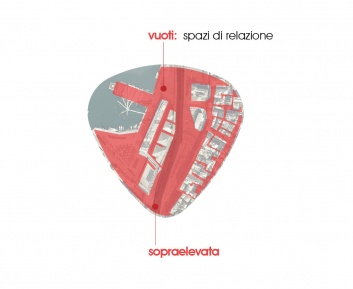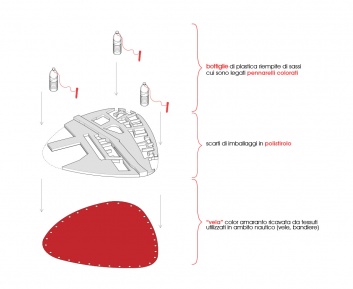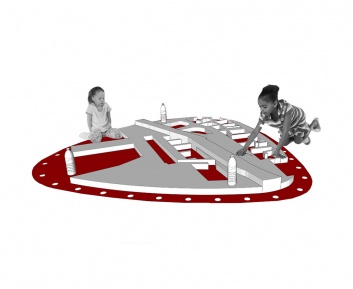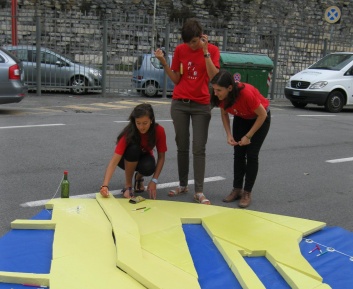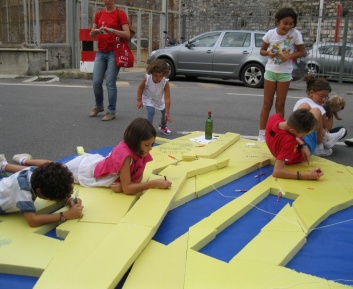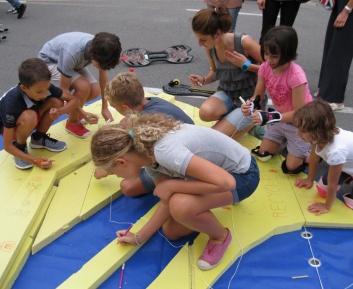GENOVA FOOTPRINTS_RE-CYCLE ITALY
YEAR
STATUS
CREDITS
2014
Competition
Maria Elisa Marini
Daniele Longobardi
Assuming as a basic theme, to be expressed through a visual and emotional work, the slogan proposed by the European Community Our roads, our choice, the formal and conceptual idea was immediately aimed at raising awareness on urban theme, proper to the contemporary city, such as a rational use of public spaces.
Activate a focus, therefore, not on the full volumes, emerging characteristics of the city easily visible and identifiable in their recognition, but rather to focus on the gaps, the places where there is the real social and cultural activity of the urban and human space of the city.
Often relegated to a corollary of the more evident emerging structures, the empty spaces are the true shapers of the city concept as a place of relationships.
Based on this assumption the project proposal has been developed including what were the elements of emptiness that could further characterize a complex city like Genoa:
The pedestrian space, first of all, as the main element of the proposal and the main protagonist of the searching of the voids in the old town of Genova;
The dimension of the water, the contact with the sea that has characterized and characterizes the life and history of the city of Genova ;
The high road, cornerstone of the contest, footprints exhibition host and element with evident meaning related to the recovery of the areas of movement. The admixture of these elements has define the choice of the bound portion of the city to analyze and deconstruct in its main elements.
The project proposal is therefore defined as a representation of a portion of the city, significant for the themes that lead into the dialogue on public spaces.
The chosen media connects clearly to the historical and present of the city of Genoa being formed by a sail, referring to the contact that the city have with the sea.
The main element of the proposal is, however, the representation of the voids of the city, differently from a classic representation we wanted to extrude and give prominence to those voids, normally neglected. In this case, the empty spaces emerge from their support by acquiring a three-dimension shape such as in the real space.
In this installation, the user of the exhibition will be forced to face a representation of his own city diametrically opposed to that which is used to living, then pushed to think consciously about what are its streets and especially its choices, restoring dignity to the pedestrian spaces.
The extruded elements, the voids of the city, will become the true subjects of the project proposal, deliberately ignoring the built space in the background.
The materials identified are constituted, in addition to the base defined by a cropped amaranth sail, even by a series of polystyrene elements, recovered from the waste of a company that produces industrial packaging, which form the elements extruded and attached to the sail.
These are then available for coloring by the public so that the user’s experience is completed at the end of the exhibition with the collection and analysis of the marks of the real subject of the initiative: citizens who recover their public space.


